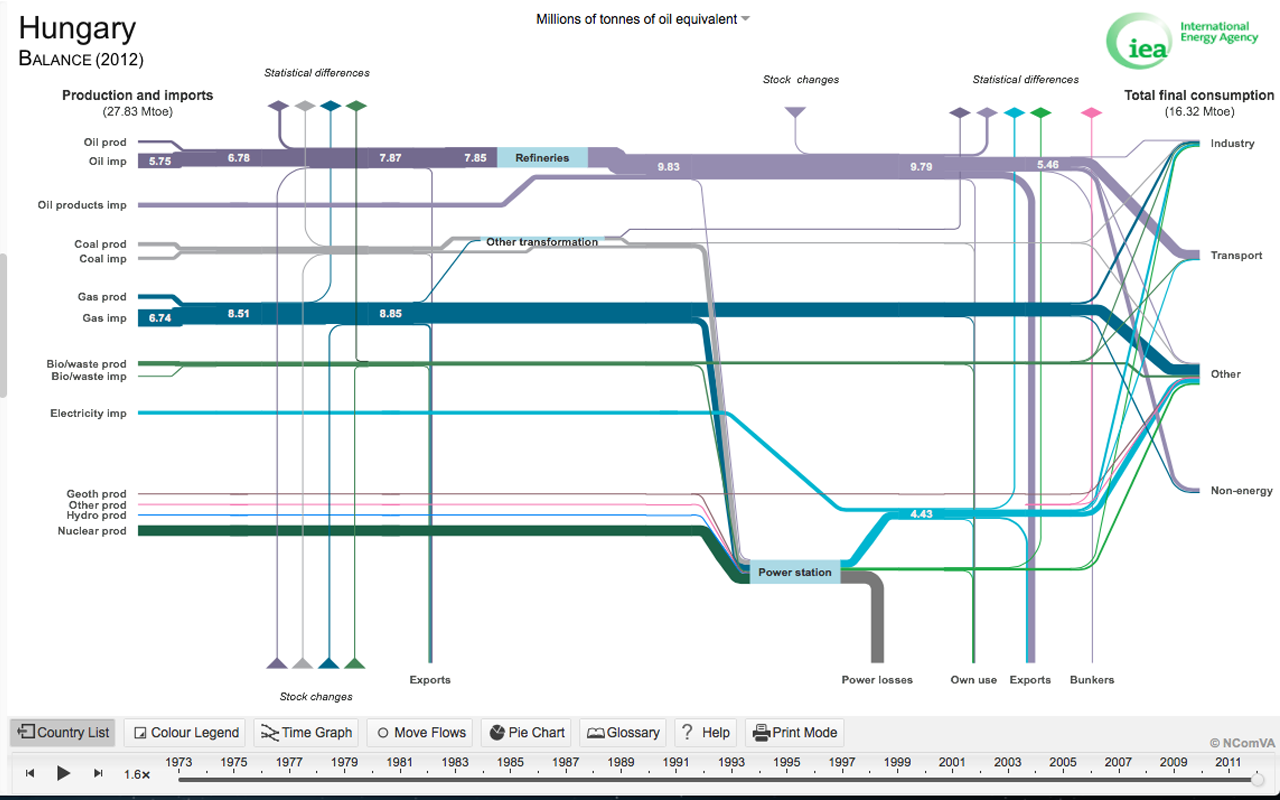Week 6 Compulsory Exercise - Hungary
FC-02x Livable Future Cities (1st Run) - Compulsory Exercise 3

Uploaded on 2015-11-04 by BlankaBorbely
Most fossil fuels are imported into Hungary. The website www.iea.org/sankey has its latest data from 2012. According to it, gas was the most dominant fossil fuel in the country at the time, closely followed by oil. In 2012, 6.74 Mtoe (millions of tonnes of equivalent) of gas was imported, while 1.77 Mtoe was produced. At the same time, 5.75 Mtoe of oil was imported, and 1.03 Mtoe of oil was produced. 1.94 Mtoe of oil products was also imported. However, a high amount of oil (2.8 Mtoe) was then exported as well. Only 0.69 Mtoe of gas was exported at the time. A significantly smaller amount of 1.27 Mtoe of coal was imported, and 1.61 Mtoe of coal was produced by the country. Below is the Sankey diagram of Hungary from www.iea.org/sankey, referring to the year 2012: ![Sankey diagram Hungary 2012 from www.iea.org/sankey][1] **2. Where are the dominant fossil fuels mainly used for in your country?** In the Sankey diagram, there are four different categories under “Total final consumption”. These are Industry, Transport, Other and Non-energy. The majority of gas (4.18 Mtoe) goes into the Other category. Only very small amounts are used in the Industry and the Non-energy categories. The biggest amount of oil (3.56 Mtoe) is used for Transportation while 1.47 Mtoe is used for Non-energy purposes. Small amounts are used in the other two remaining categories. Most of the produced and imported coal goes into power stations (1.84 Mtoe), but very small amounts also go into the Industry, Other and Transport categories as well. **3. It is your task to create a new policy in order to improve the environmental friendly and sustainable sources and consumption of energy of your country. How would you do that?** I think it is important that residents, companies, and developers in the county are encouraged and helped by the government to make buildings (both old and new) as environmentally friendly as possible. This could be achieved by reducing prices of sustainable building materials, insulation materials, etc., possibly by reducing their taxation, and offering financial support for individuals and companies for upgrading heating- and cooling systems and building openings. Fundings for renewable energy plants should be increased. Public transport systems could rely more on renewable energies. Materials should be better recycled and reused, better funding for this cause is also needed. All newly built buildings should be zero carbon, if possible. More funding should go into research, education, and making people aware of the environmental challenges we face. [1]: https://edxuploads.s3.amazonaws.com/14466300148656634.png